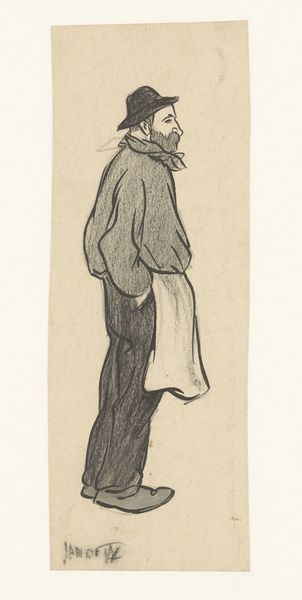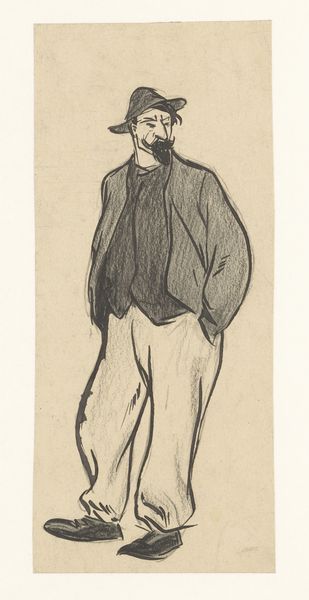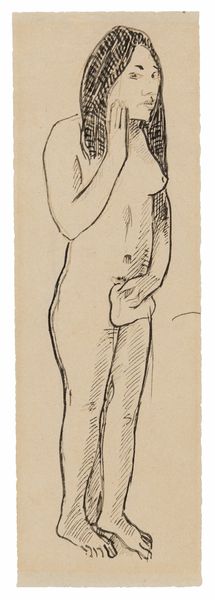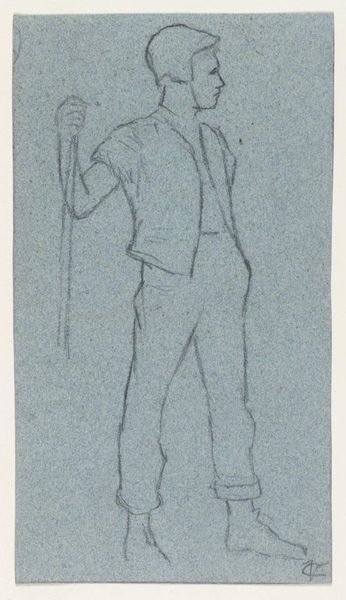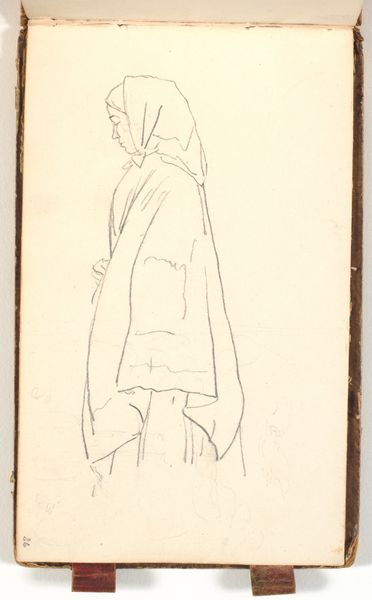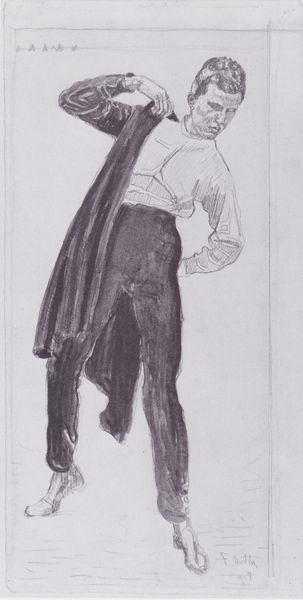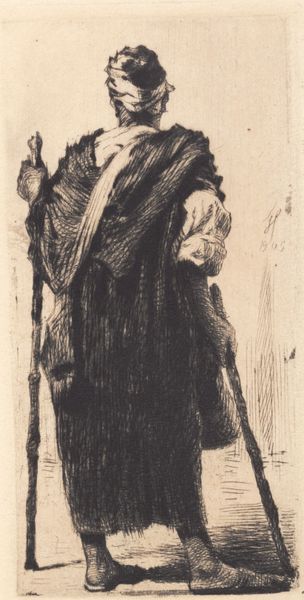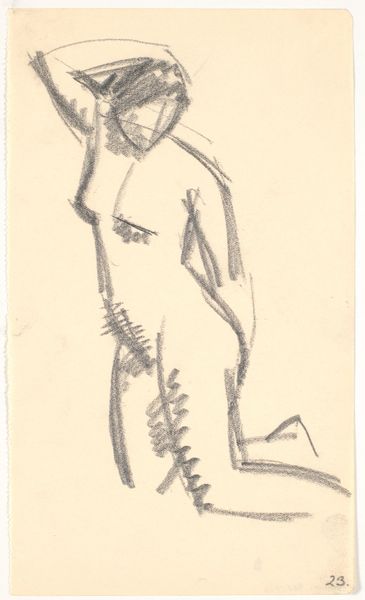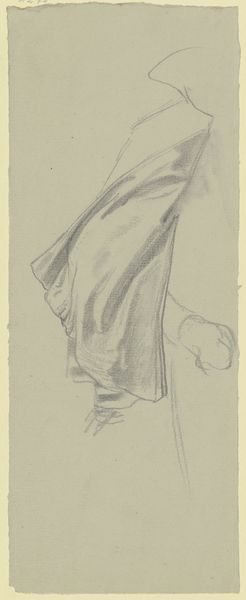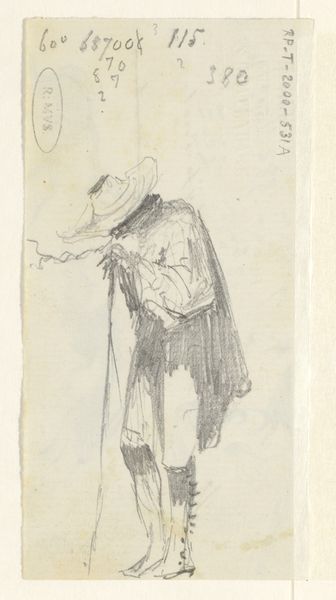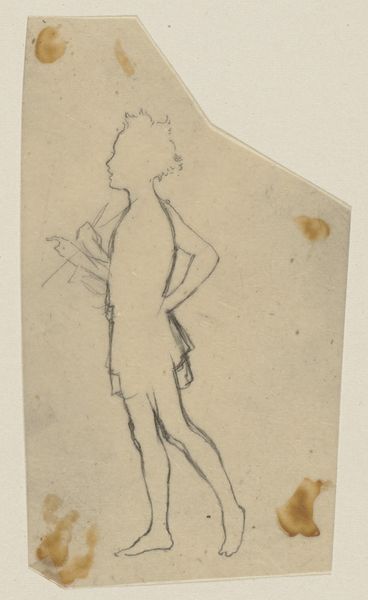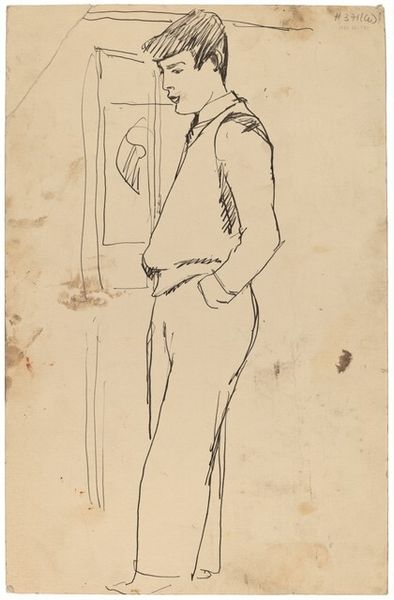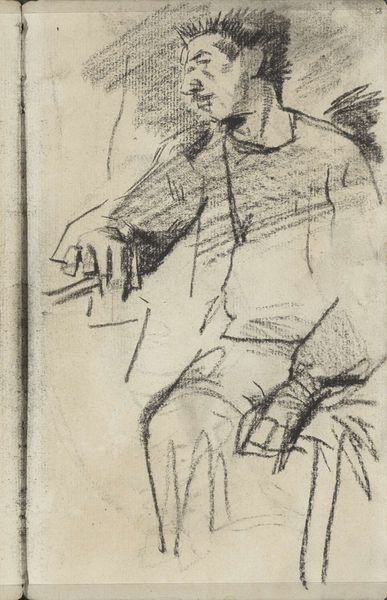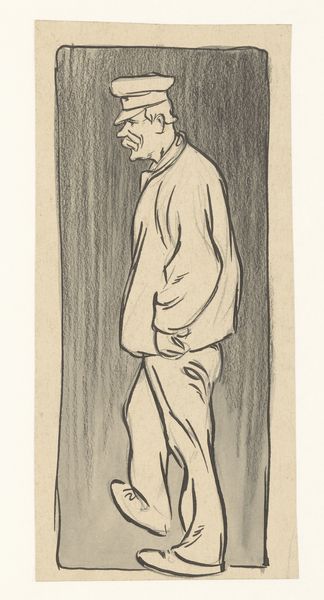
drawing, ink, pen
#
portrait
#
drawing
#
comic strip sketch
#
imaginative character sketch
#
cartoon sketch
#
figuration
#
personal sketchbook
#
ink
#
idea generation sketch
#
ink drawing experimentation
#
pen-ink sketch
#
line
#
sketchbook drawing
#
pen
#
storyboard and sketchbook work
#
sketchbook art
#
realism
Dimensions: height 192 mm, width 116 mm
Copyright: Rijks Museum: Open Domain
Editor: This pen and ink drawing, "Staande man," or "Standing Man," was created sometime between 1881 and 1899 by Jan de Waardt. The figure is quite simple, but the stark lines of the clothing contrast interestingly with the smooth curves of the body. What do you see in this piece? Curator: What strikes me is the immediacy of the drawing itself. Pen and ink – humble materials, readily available. The artist's labor is laid bare; there's no hiding behind layers of paint or complex techniques. We see the hand at work, making and remaking lines. Editor: It feels unfinished, more like a sketch. Curator: Precisely. Think about the context: late 19th century. Traditional hierarchies of art are being challenged. This isn’t a grand history painting meant to convey noble ideas, but an exploration, a study. Consider the accessibility of drawing – anyone with a pen and paper can engage in the means of production, democratizing artistic creation. Editor: So, you’re saying the choice of materials is a statement in itself? Curator: Absolutely. It's a refusal of artifice, a focus on the essential act of creation. And we might ask, who was this man? Was he someone de Waardt observed, perhaps even a fellow worker? The drawing then becomes a document of labor and social observation. Editor: That gives me a completely different way to look at it! I was focused on the figure itself, not on the *act* of drawing. Curator: Materiality can reveal a lot. It shifts our focus from what the art *represents* to how it was made and its role within a specific social context. Editor: So, considering the means of production changes our perspective... thanks. Curator: Indeed, a shift of perspective allows us to ask new and challenging questions of the work.
Comments
No comments
Be the first to comment and join the conversation on the ultimate creative platform.
